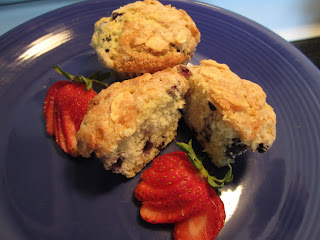
!Hola Dancing
the Macarena into the kitchen today!
Inspiration for this recipe selection came from researching chocolate which goes back to Aztec times.
Mexico.
My first experience with Mexican food came when my family accompanied my father on a Convention trip to Memphis, Tennessee.
I was around nine years old, the year 1963. 78 years after the first reference to enchiladas in the United States. How does Mexican cuisine and Tennessee relate, you ask? I haven't a clue except that was my first introduction to an authentic Mexican family and their cuisine, whose restaurant my family happened upon and selected for dinner that evening.
I'll never forget my first taste of homemade salsa and freshly made tortillia chips. The rest of the meal which included enchiladas was just as memorable.
It was a great trip with memories that included an up close and personal view of Graceland, Elvis Presley's home.
Back to Mexican cuisine and enchiladas...
According to The World of Food And Wine
Salsa was sold in the Aztec market places. Salsa, the Spanish word for sauce, is uncooked and sometimes pureed until chunky, smooth, or chopped. Large red tomatoes, tomatillo, chipotle {a staple in the Aztec diet} and the avocado are found in the modern salsa, and are the same core ingredients used in the past. We can thank the Aztecs for Chocolate. It was through them that the Spaniards brought the product to Europe in 1657.
The term enchilada is first referenced in the US in 1885. Yet the concept of tortillas being used as a wrap can be clearly linked to the Aztecs. The word enchilada means "in chile."
The tomatillo is a fruit that dates back to at least 800 BC, the word meaning round and plump. The Aztecs domesticated it, and when the Europeans came to Mexico, they documented the local foods and often confused the names by shortening the words. Though never popular with Europeans, it thrived in Italy. Today a relative of the fruit is common in the US. Tomatillo, a member of the night shade family, provides tart flavor in many different green sauces.
The Portuguese aided the spread of the chili pepper plants. Thought the earliest mention was in 1542 when a German herbalist, Leonhart Fuchs, described and illustrated several types of peppers. Though for people of Europe, the history of the pepper began in the late 15th century, when Colombus brought the peppers home. There is archaeological evidence that peppers were in use since 5000 BC.
Pre-Columbus is how far back the Tamale can be traced. The Friar Bernardino de Sahagun documented that the Spaniards were served tamales by the Aztecs in the 1550's.
Other foods that we associate with Mexican cuisine, are not traditionally so. The Flan was discovered in Medieval Europe. And ceviche is an Inca discovery, eating their catch of the day raw with only a few seasonings. It wasn't until the late 15th century when Native American chefs of Ecuador and Peru began to add the citrus fruits with the South American fish, and creating the dish that we know today.
Flavors from around the world have influenced Mexican dishes. The same can be said about Mexican traditional favorites affecting other countries menus. In just about every culture you look at, you can find a hint of Mexico.
My suggestion for a lovely Mexican menu would be homemade salsa and chips, a bubbling tray of enchiladas, spanish rice and refried beans. Complete the meal with a lovely, Carmel Flan.
Enchiladas
1 lb ground beef
2 cloves garlic, crushed and minced
½ cup chopped onion
1 cup shredded Monterey Jack cheese
8 -10 small corn tortillas
½ teaspoon salt
¼ teaspoon black pepper
2 cans enchilada sauce, 10 oz each
¼ cup Pace cheese queso dip
Fresh parsley to garnish
Sour cream
Sliced Black Olives
Preparation:
Preheat the oven to 350 degrees F.
Brown the ground beef, onion and garlic in a non-stick skillet for 8 to 10 minutes or until the beef is brown. Pour off any grease. Season with salt and pepper. Stir in ½ cup of enchilada sauce and set aside the rest from that can, stir in cheese queso dip.
Pour the whole of the other can of sauce into a shallow baking dish.
Heat enough oil in a pan to cover bottom. Dip one corn tortilla in oil, one side then the other, just to soften (not fry). Complete the process with all the tortillas. Lay on paper towel while cooking the others.
Spoon the beef down the middle of each tortilla and roll it up. Put the enchiladas seam side down in a 13 x 9 inch baking dish. Spraying pan with Pam first helps with clean up.
Cover the dish and bake for 15 minutes. Uncover the dish, spoon the rest of the enchilada sauce from the first can over the enchiladas and sprinkle with the cheese.
Bake uncovered for another 10 minutes or until the cheese melts.
Garnish with parsley and serve with sour cream and sliced black olives.
(Serves 4)









